05. Aperture and Depth of Field
Aperture is one of the six essential requirements for creating an image — it not only controls how much light your camera is able to record, but also the depth of field. Depth of field (DoF) is an important compositional and creative element in any image so it’s important to understand what it is and how to control it.
What is aperture?
As you would have understood from chapter one of this course, aperture refers to the size of the opening that light passes through before hitting your camera’s sensor. By controlling the aperture, we can control how much light is recorded in an image as well as the depth of field. The larger the aperture, the more light is recorded and the shallower the depth of field. With smaller apertures, less light is recorded and the depth of field is greater. Aperture is recorded in f-stops and is shown by the symbol 'f'.
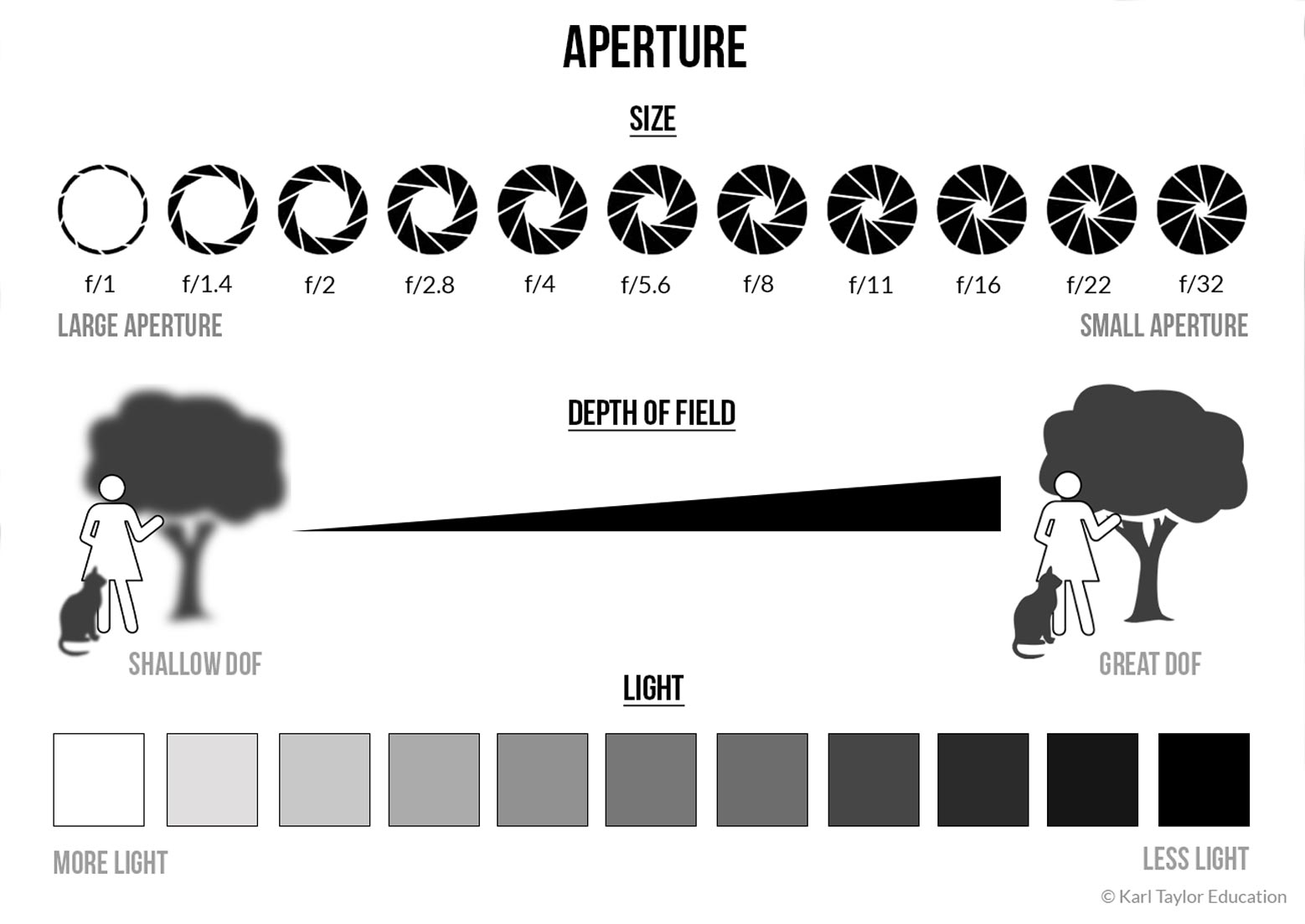
Large aperture vs small aperture
Aperture is something that easily confuses new photographers, but it’s important that you understand the difference between large and small apertures. When referring to ‘large’ apertures, we are not referring to a large number value. Instead, we are referring to the aperture or exposure value. So, for example, f1.4 would be considered a large aperture, while f22 would be considered a small aperture.
Large aperture size = Smaller f-stop number = Shallow DoF
Small aperture size = Larger f-stop number = Large DoF
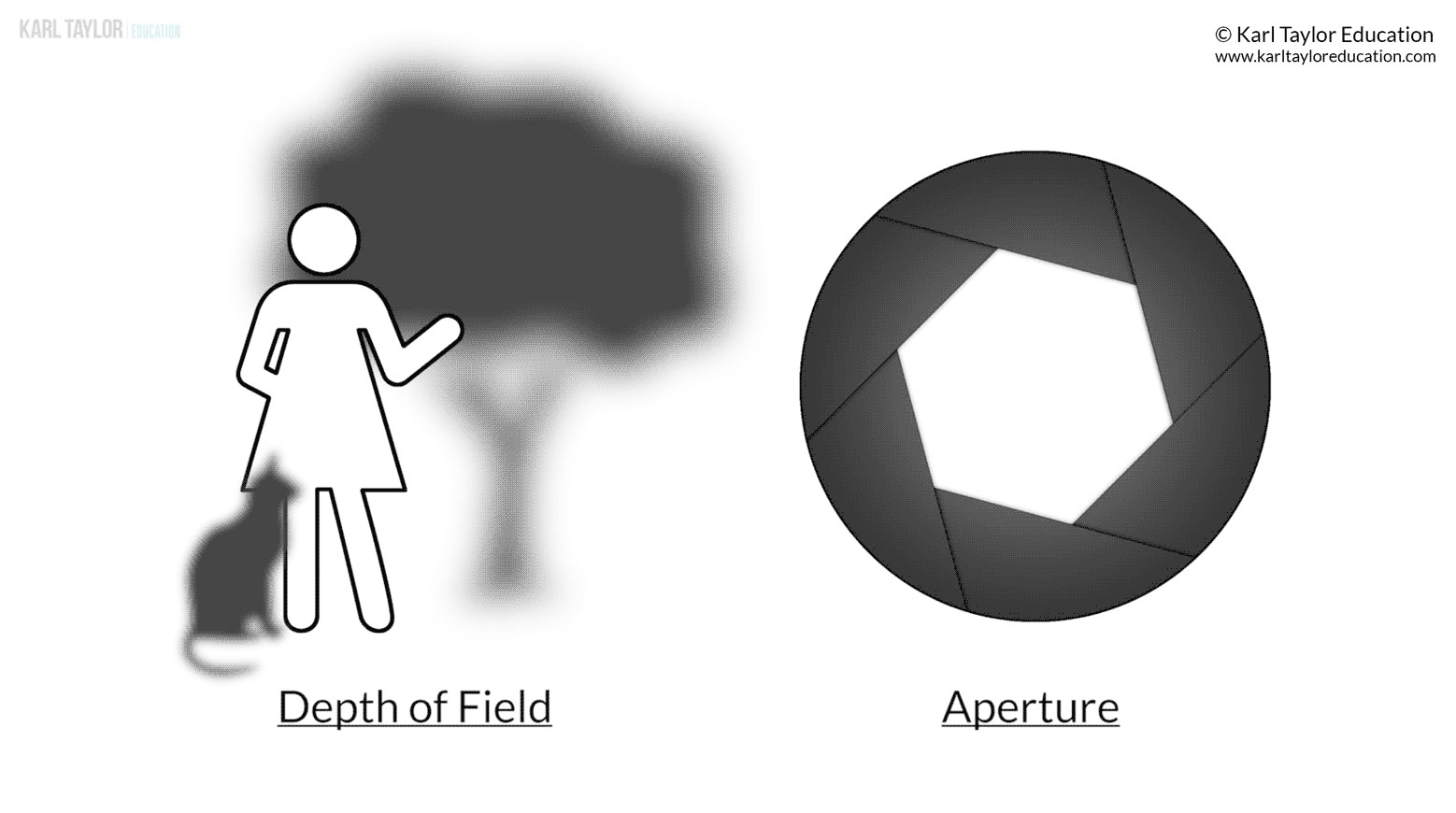
What is depth of field?
Depth of field is the sharpness range either side of a focus point. This is controlled by the aperture. As you will have seen from the example above, larger apertures (smaller f-stop numbers) result in a shallower depth of field, where less is sharp, while smaller apertures (higher f-stop numbers) will result in a greater depth of field, where more is sharp.
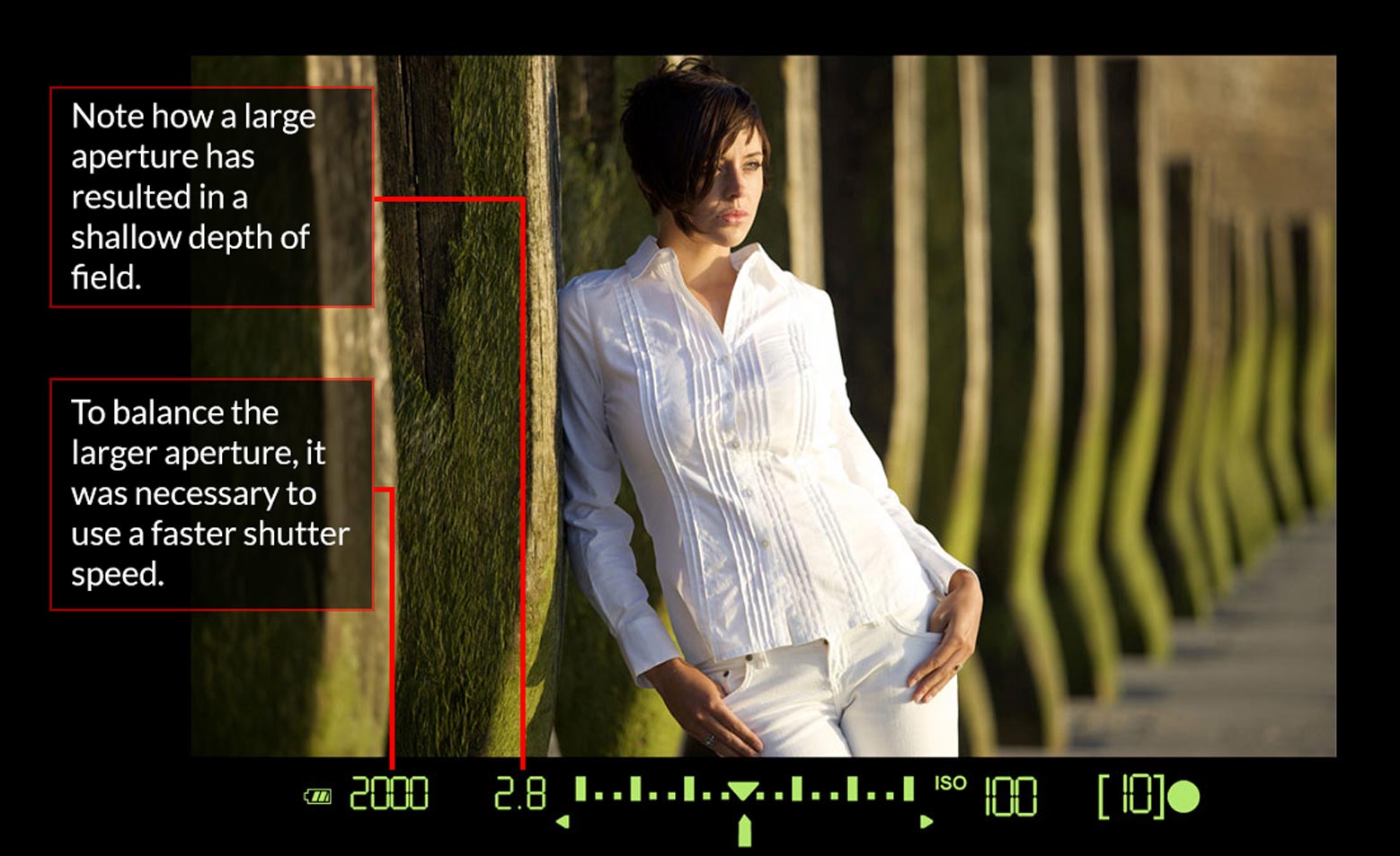
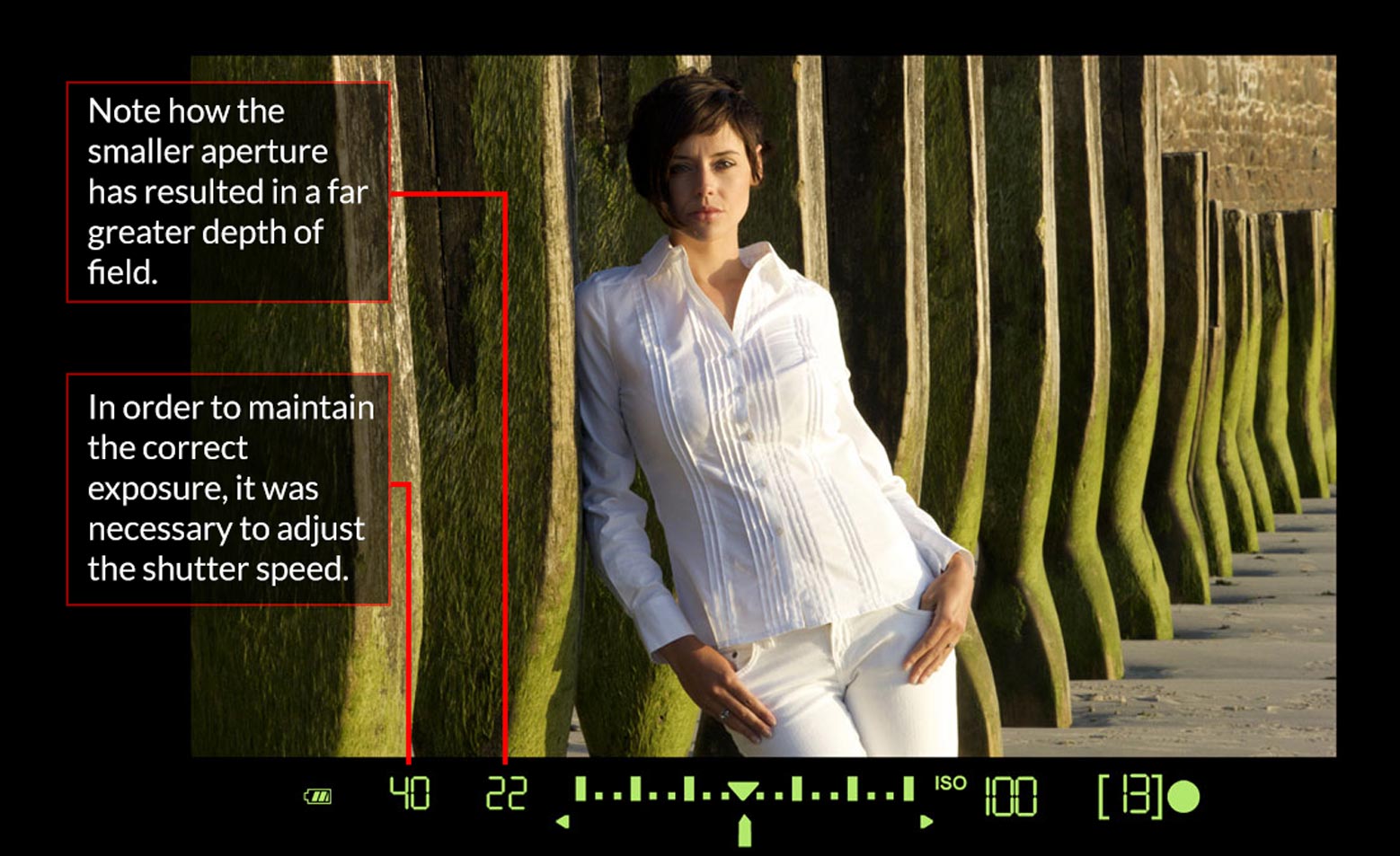
How to control depth of field
There are three different factors that influence depth of field — aperture, distance from your subject and magnification. First, let’s look at how to change your depth of field using different aperture settings.
If you’re shooting in Auto mode, your camera will decide the ‘best’ aperture for you. If you’re shooting in Aperture Priority mode, you can simply set the aperture by using your camera’s control dial and your camera will automatically determine the shutter speed. If you’re shooting in Manual mode, you have the greatest level of creative control, but you have to do the job of balancing your aperture and shutter speed to get the best exposure. In any of these modes, you can simply adjust your aperture using either the front or back control wheel of your camera.
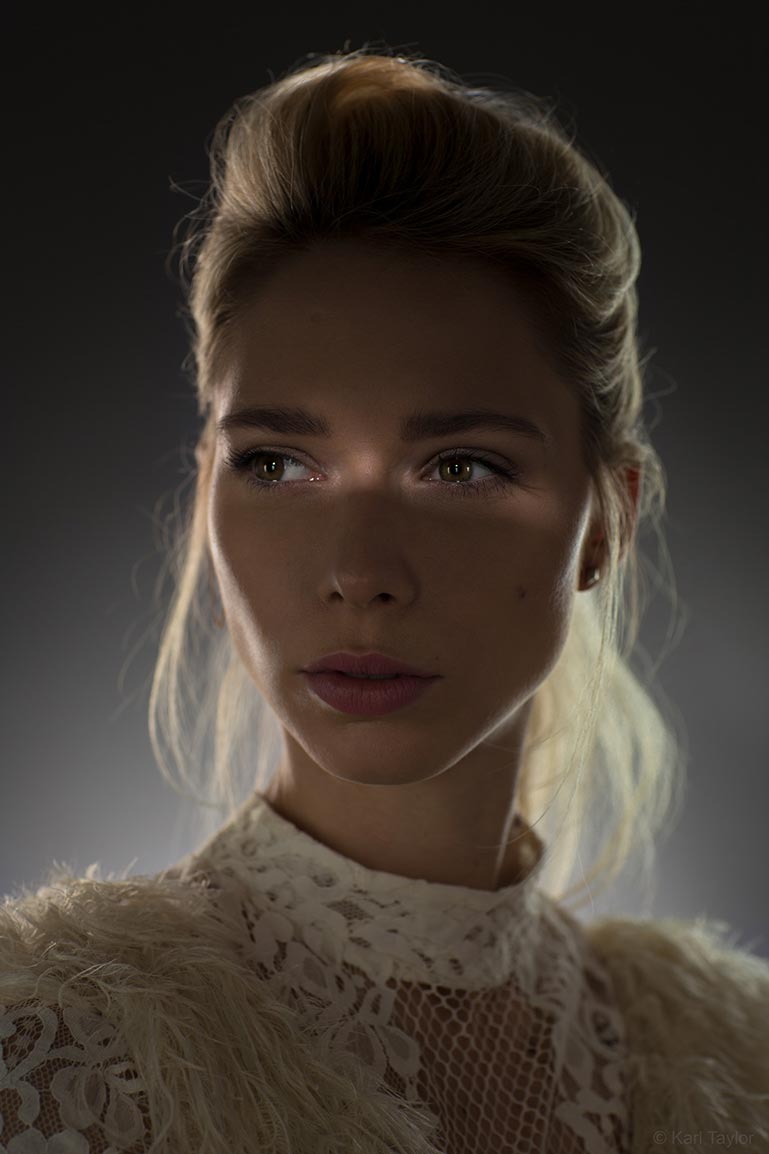
Interested in portrait photography? Click here.
Changing the aperture is the easiest way to control depth of field. As we've already explained, larger apertures result in shallower depth of field while smaller apertures result in larger depth of field. Although this may be the easiest way to adjust the depth of field, it is not the only way.
The distance from your subject will also affect depth of field. The closer you are to the subject, the shallower your depth of field will be (and vice versa). At the same aperture, shooting closer to your subject will give a much shallower depth of field, while shooting further away will give a much greater depth of field. This is due to magnification, which we'll look at next.
Magnification is the third factor that affects depth of field. In this case, magnification can refer to the sensor size, focal length and distance from the subject. For example, a larger sensor size, longer focal length or closer focusing distance will result in shallower depth of field. At the same aperture, full frame cameras will have a shallower depth of field compared to crop sensor cameras. Again, at the same aperture, medium format cameras will have an even shallower depth of field than full frame cameras.
Lenses and depth of field
In addition to the aperture, distance from your subject and magnification, the lens you use can also impact depth of field. Different lenses have different depth of field characteristics, which is caused by the magnification of the lens. The greater the magnification (as with telephoto lenses), the shallower the depth of field, and vice versa with wide angle lenses.
This means that if you’re shooting at f4 using a 24mm focal length 10m from your subject, you will have much greater depth of field than if you were shooting f4 using a 200mm focal length 10m from the same subject.
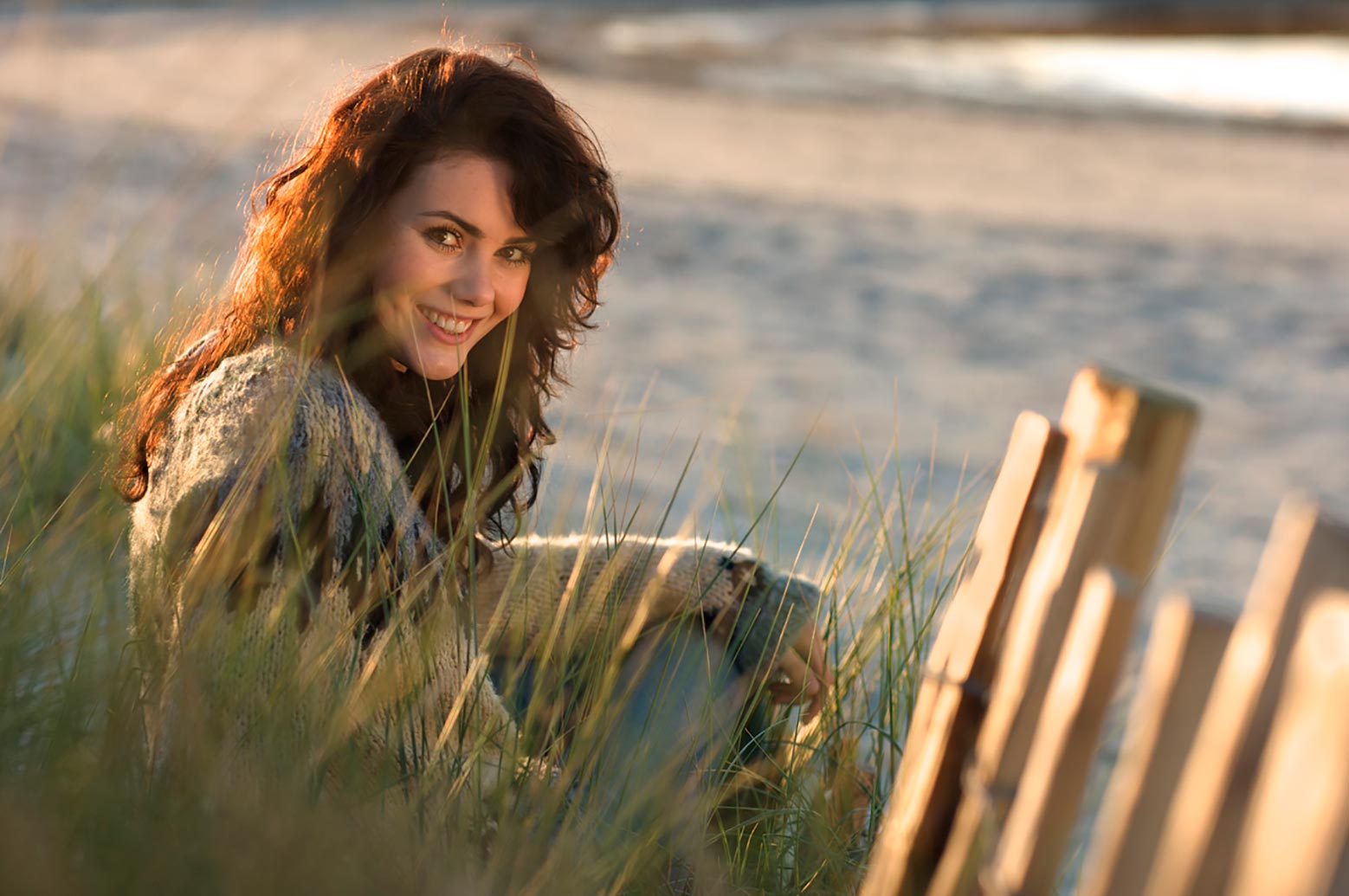
Interested in creative portrait photography? Click here.
Depth of field examples
This natural light portrait image below was shot using an aperture of f1.2, which means although it was enough to keep the subject sharp, the foreground and background are out of focus.
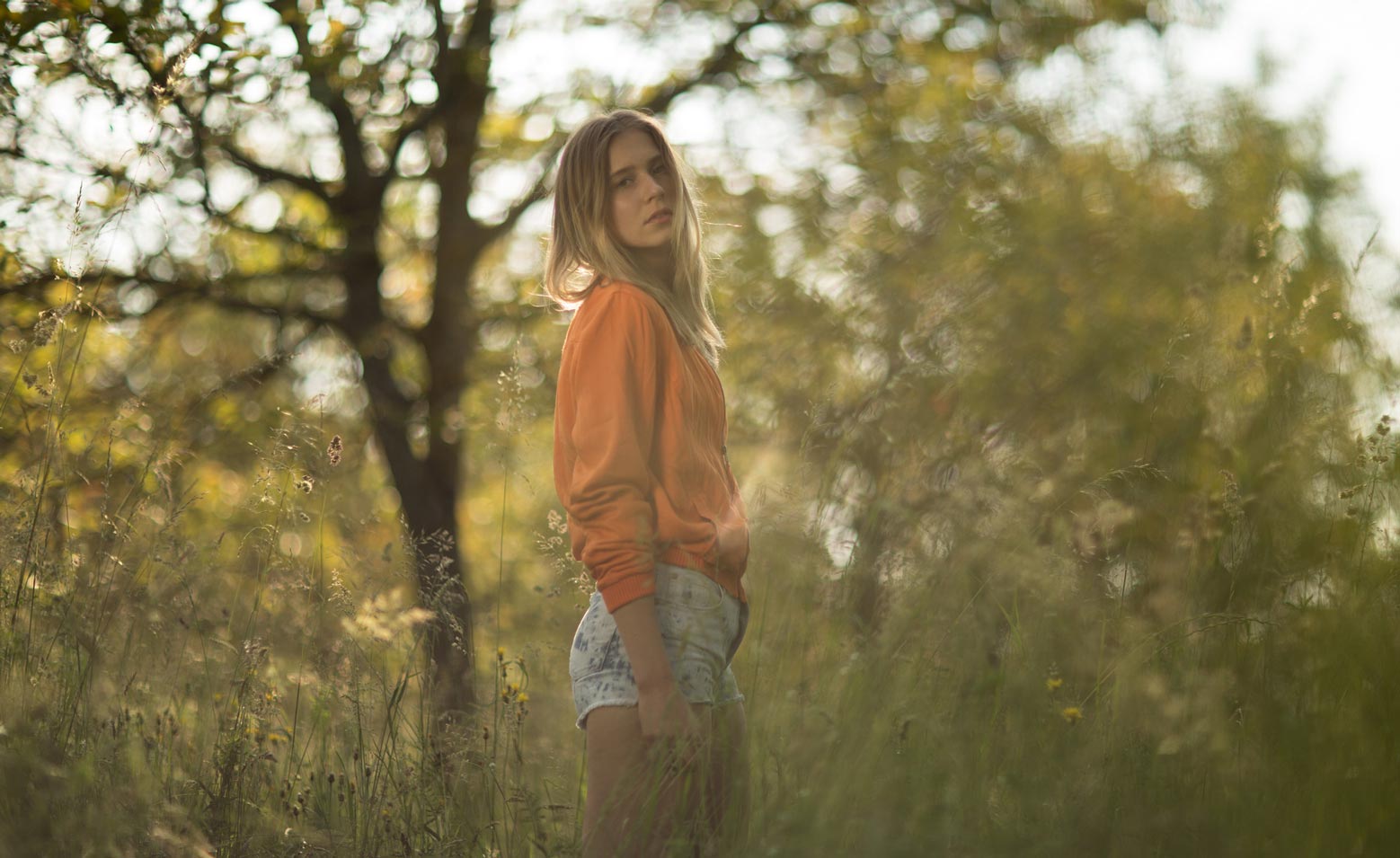
Interested in natural light portrait photography? Click here.
Full open apertures, such as was used in the image above, are great for photographing people as it allows us to blur the background and bring attention to the eyes or face of the subject. On the other hand, if you’re photographing landscapes, generally we want more depth of field so that we can see into the distance, which is why smaller apertures (such as f16) are often used.
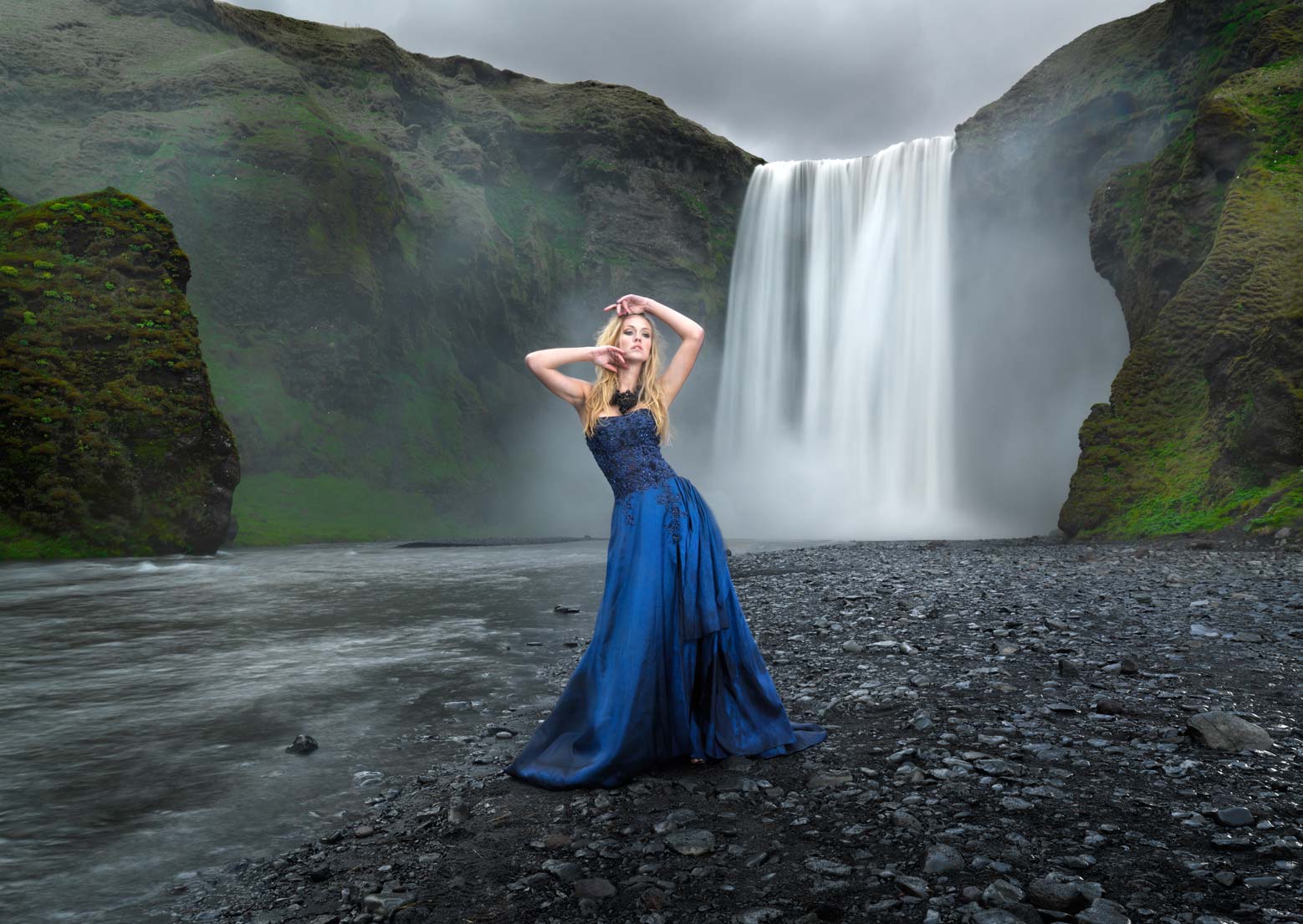
Interested in fashion photography? Click here.
An aperture of f22 was used for this Fashionscape image above. You can see how the depth of field runs much further, allowing the model and the background to remain sharp (you can see how this image was shot in the full tutorial here).
All content © Copyright Karl Taylor Education.
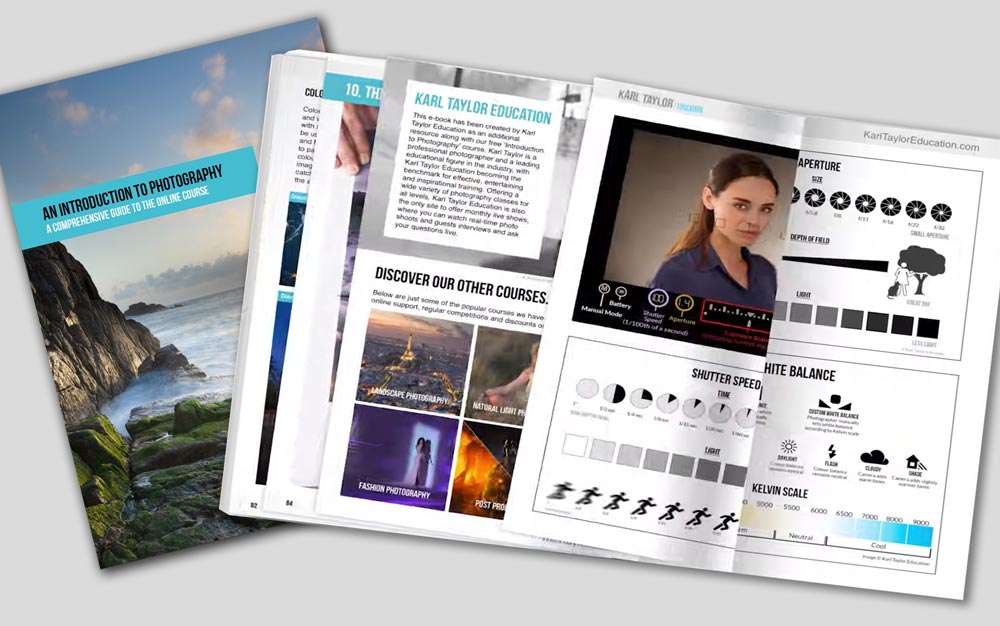
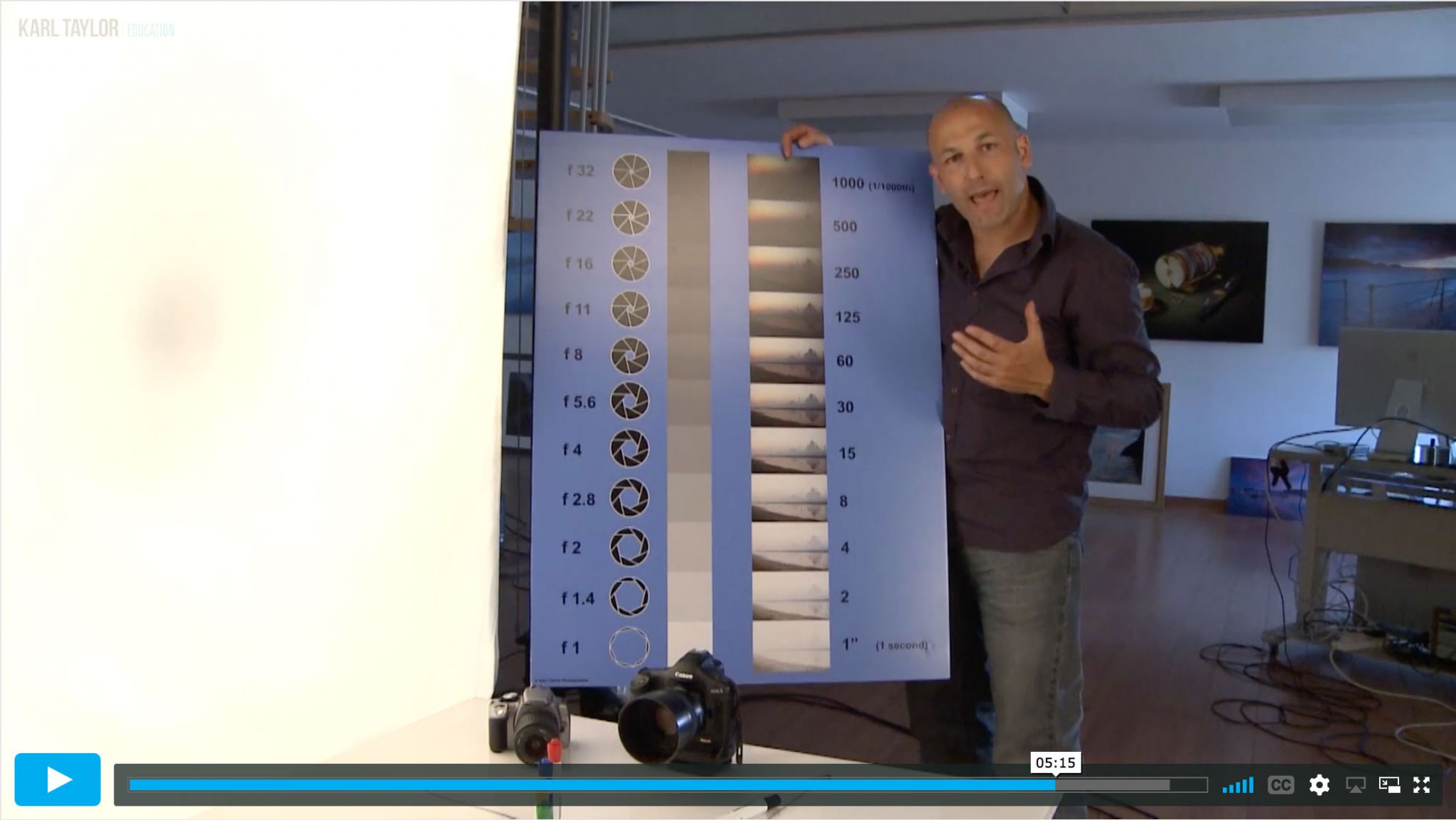

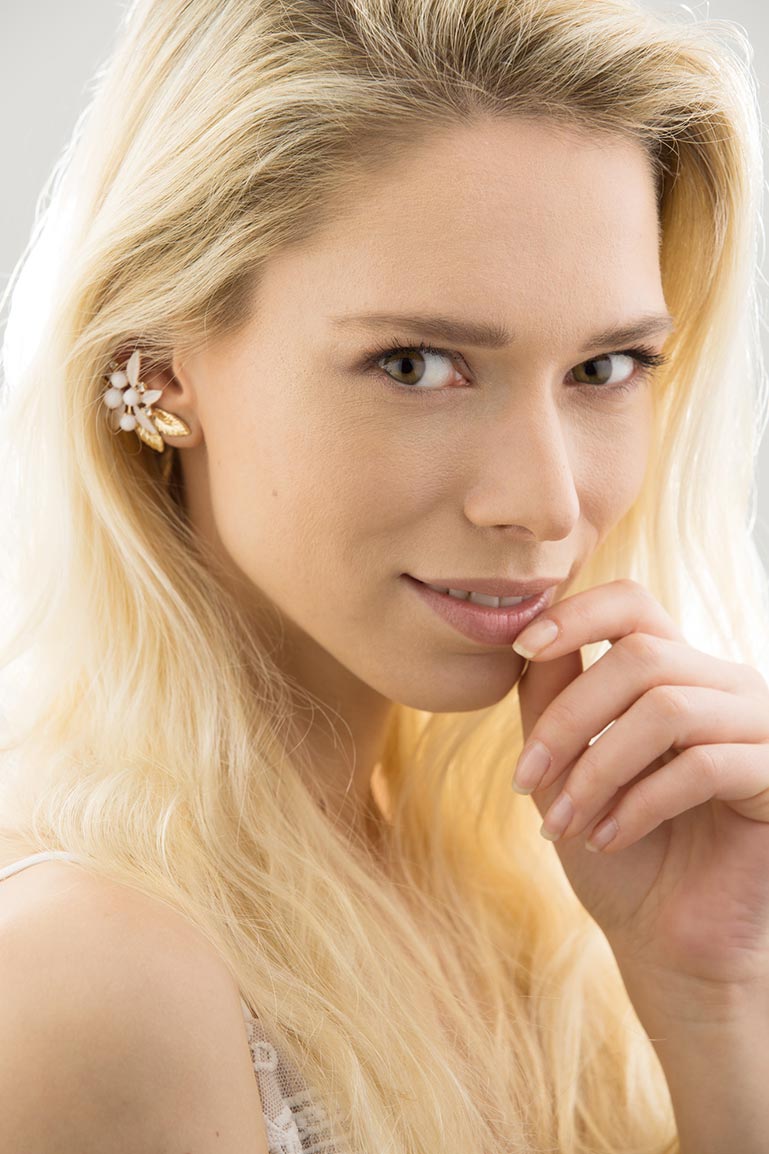
Comments
Great Explanation !
Karl, couple of question as below
1. For shooting a model portrait with 90-100% composition focused on the face, which F-Stop is recommended to choose to have the whole face sharp ( eyes, lips, nose…etc). When using a two strobe setup with big softboxes that are 3-5Ft away from the model face
2. For shooting a models portrait with the model full body in the composition with some decent focus on above the chest and tack sharp on the face, what would be the recommended F-stop in a setup with one of two light setup
3. If shooting 3 to 8 people in the composition, I heard that the F-stop should always depend on the number of people in the composition (for family photos) , for example, if 3 people F4, 4 People then F8, 8 people then F16…..so on. Is this accurate?
Hi Srini, 1. F16 2. F11 – F16 3. What you heard is nonsense. Depth of field is a result of the selected aperture and the scale of magnification. The more magnification (longer focal length lenses, closer focusing) then the less depth of field. The larger the aperture less depth of field. For group shots it will depend partly on your choice of lens and your shooting distance as well as your aperture. The great thing with modern cameras though is you can see the results of the depth of field instantly so just shoot it and check.
Karl, in that last photo (with the model in front of the waterfall), a slow shutter speed was used to blur water, which I get. But how can you do that with a model in the frame? Is she that good at remaining still or is there another technique? These videos are amazing, saw you on a Hasselblad webcast and so glad I did. Keep up the good work.
Hi, thanks and glad you enjoyed the webinar. You can actually watch that shoot and see how the model held her pose, it’s in this section – https://visualeducation.com/section/fashionscape/
karl, how do we find suitable aperture for a lens?
Hi, if you have asked me that question then please watch this course and if you have the same question come back to me – https://visualeducation.com/section/introduction-to-photography/
I’m glad I chose Karl’s subscription over the other courses out there.
Thanks you! 🙂
Count me in! Saw it on YouTube ad, immediately sub to his courses.
thank you for the easy explanation
Thank you, Karl. I find your training very easy to grasp. I am just starting out at the age of 50 and am learning a lot already. So much to learn and not that much time, so here we go! Thanks again. Tim
Thanks Tim.
A brilliant explanation Karl – thank you!
Thank you and you’re welcome.
would be amazing if you could have an app 🙂
Hi Karl, Every time I used to visit you tube your advertisements used to pop up, as I had clicked on it once. Ever since it haunted me every time I was on youtube or stumbling on some website. Well, I believe I had to be here and its a very intelligent approach to enroll in your course. It’s been only on my 5th chapter and although I have been doing photography cause I love shooting people like families or landscapes. These courses are giving me in depth understanding of the technicalities that is involved in making a good image. I have a canon 7d mk ii, with 18-135, and sigma 70-300 apart from the kit lens. I was wondering to invest in either sigma 150-600 f/4 or canon 70-200 f/4. Your suggestion would be highly appreciated as I advance through my learnings from your course. Some of my photographs are listed here https://500px.com/pixelsandgrid let me know your thoughts. Thanks for being a mentor for me and many aspirants. Keep up the good work
Hi Romy, thanks for signing up and I’m sure it will help you get the very best out of all areas of photography. In answer to your question you really need to think about what it is you want to shoot with these lenses. 600mm is a massive focal length and usually reserved for wildlife and sports and it will probably be a bigger heavier lens. The 70-200 has more usefulness in portraits at the 70-135mm range and then is OK for some further stuff at 200mm but you can always add a 2x convertor. So it really comes down to what you want to shoot and what you want to carry. Cheers Karl.
Please, how can I download ?, my internet is not strong enough to watch on a stretch..
Regards, Mic from Lagos.
Hi Mic, Our videos autoplay at the appropriate resolution for most internet connection speeds. If you are having trouble with your internet speed you can also manually select a lower resolution in the video player settings. I’m afraid we don’t offer downloads, our business is a streaming and membership platform.
Hi Karl, I have learnt more about photography in the last 24 hours than I have in the last 2 years. You and your team do some amazing work. Training doesn’t go far enough to describe what you do, it truly is an education. I can’t even begin to describe the value for money that you are providing with your content. Keep up the great work!
Thank you James, please spread the word! 🙂
I use Canon Rebel T2i. Can I use 85mm for portraits? What do you suggest between 85mm and 70-200 f2.8?
Yes 85mm is usually best for portraits.
Than you Karl. This demonstration is very helpful. I am looking for good portrait lens and also tripod to take my family portraits. Can you please suggest ? I would really appreciate if you can demonstrate what lens are good for portraits, baby photography and landscape photography.
Hi Ramya, On a full frame 35mm camera then my choice would be 85mm with a 1.2, 1.4 or 1.8 maximum aperture for all your portrait work, if you need to shoot portraits from further away then a 70-200 f2.8 is also a very versatile lens but not often necessary if you have the 85mm. For landscapes it’s different you’d need wider angle lenses in the 16-35mm range.
This is the best DoF demonstration I’ve seen.
The relationship between f stop and aperture speed is well explained, writing lines on table as you demonstrate is simple and should be really helpful for visual learners. Also was good brush-up for tired skills.
Looking forward to more chapters.
James
For fun, this is how we did it in the old days:
Before the internet or computers, I learned this through taking and developing photos (film and developing cost actual $$ then) using Mom’s Asahi Pentax…had a built-in(!) light meter, which made it so much quicker to get proper DoF using a desired A/T value. I did have to keep a notebook to record Tv/Av for each shot or set of shots, in case I needed the lab to ‘push’ them when developing. The lab would change times/apertures on enlargers to make adjustments as if in camera…LightRoom, but in a dark room with chemicals and timers. To do it myself, I knew some labs had big darkrooms set up I could rent time in, using their chemicals and equipment to develop my photos. When I was a 12 year old. That’s how we rolled…
I remember those days James, especially the note pads and even getting the lab to run clip tests. I spent 10 years shooting film for clients before switching to digital in 2005 with my Hasselblad H1 at the time!
Kai ! You bi very good teacher Mr. Taylor ! I buy my Nikon D5200 in 2014 and since then na Auto mode I dey use. Since I start this your class about 17 days ago, I no dey use Auto again. I enjoy manual and all the new things I fit use my camera do. The $14 which i pay for this education na huge value for small money. Thank you Mr. Taylor.
Thank you Laurenta